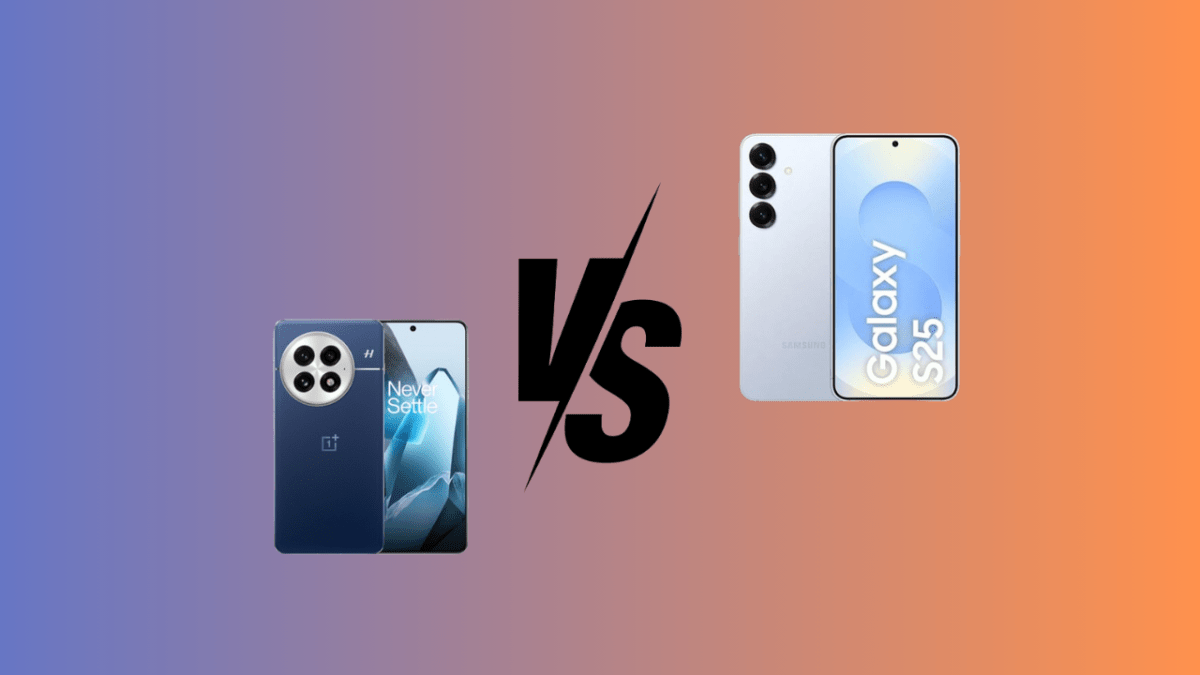Flagship smartphones are pushing camera tech to new heights, and the Samsung Galaxy S25 and Vivo X200 are no exception. Both pack high-resolution sensors, OIS, and AI-powered enhancements, promising pro-level photography. But with Vivo’s aggressive pricing, can it match Samsung’s premium imaging experience? Let’s find out.
Specification
This is are the on paper camera specification of both smartphone,
| Feature | Galaxy S25 | Vivo X200 |
|---|---|---|
| Wide Angle | 50 MP, ƒ/1.8, 24mm, 1/1.56″, 1.0µm, PDAF, OIS | 50 MP, ƒ/1.6, 23mm, 1/1.56″, PDAF, OIS |
| Telephoto | 10 MP, ƒ/2.4, 67mm, 1/3.94″, 1.0µm, PDAF, OIS, 3x optical zoom | 50 MP, ƒ/2.6, 70mm, 1/1.95″, PDAF, OIS, 3x optical zoom |
| Ultra Wide | 12 MP, ƒ/2.2, 13mm, 120˚, 1/2.55″, 1.4µm, Super Steady Video | 50 MP, ƒ/2, 15mm, 119˚, 1/2.76″, 0.64µm, AF |
| Camera Sensor | Sony IMX921 | Sony IMX882 |
| Auto Focus | Yes | Yes |
| Features | HDR, Panorama | Laser AF, Zeiss optics, Zeiss T* lens Coating, Panorama, HDR, Snapshot, Portrait, Photo, Video, High Resolution, Pano, Ultra HD Document, Slo-Mo, Long Exposure, Timelapse, Supermoon, Astro, Landscape Mode, Pro, Live Photo, Portrait Video, Night, Super Macro, ZEISS Multifocal Portrait, AI Photo Enhance, AI Erase |
| Video Recording | 4K @ 30/60 fps UHD, 1080p @ 60 fps FHD | 4K, 1080p |
| Flash | Yes, LED | Yes, LED |
| Front Camera | 12 MP, ƒ/2.2 (Wide Angle), Punch Hole | 32 MP, ƒ/2 (Ultra Wide), Punch Hole, Screen Flash |
| Front Video Recording | 4K @ 60 fps UHD, 1080p @ 60 fps FHD | 4K @ 30 fps UHD, 1080p @ 30 fps FHD |
Vibrancy and Backlight Handling
The Samsung Galaxy S25 produces slightly more vibrant photos compared to the Vivo X200. In backlight conditions, the Vivo X200 tends to darken the scene slightly, whereas the Galaxy S25 handles it well, maintaining details and balance. If you frequently capture backlit photos, the Galaxy S25 is the better choice.
Natural Blur and Dynamic Range
The Vivo X200 naturally blurs the background in certain shots, a feature not as prominent in the Galaxy S25. If you prefer natural background blur, keep this in mind. When it comes to dynamic range and highlights, the Galaxy S25 delivers consistent performance, while the Vivo X200 performs well but lacks consistency.
Low-Light Photography
This is where the Vivo X200 shines. It produces high-contrast images with accurate colors and minimal noise. In contrast, the Samsung Galaxy S25 struggles with low contrast, making its low-light images less appealing. If low-light photography is a priority, the Vivo X200 is the clear winner.
Ultra-Wide Camera Performance
The X200 boosts colors more than the S25, which is a matter of personal preference. Some users like enhanced colors, while others prefer a natural look. However, neither phone performs exceptionally well in daylight ultra-wide shots. In low light, the X200 dominates.
Telephoto Camera Performance
Both smartphones offer 3x optical zoom, but they handle human subjects differently. The X200 blurs backgrounds even when the subject isn’t human, while the S25 keeps the background sharp, making it more versatile. From a general perspective, the S25 is better for most users, but the X200 excels in image processing, color balance, and detail preservation.
Night Photography with Telephoto Lens
Once again, the X200 outperforms the S25 in night photography. It handles noise, shadows, and dynamic range exceptionally well, making it the go-to choice for low-light telephoto shots.
Portrait Mode Comparison
In edge detection, color accuracy, and background blur, the X200 delivers superior portrait shots. While the S25 isn’t bad, it falls short in comparison. Both phones feature 50MP ultra-wide cameras, but the results are similar to their standard lenses. Again, in low light, the X200 takes the lead.
Selfie Camera Performance
Neither phone offers an impressive selfie experience. The S25 applies a blush effect, while the X200 blurs the background even without portrait mode, which isn’t ideal. However, when ignoring the blush effect, the S25 delivers better color accuracy, softness, and edge detection. In portrait selfies, the S25 smooths details excessively, whereas the X200 tries to enhance but fails in execution. So, Samsung wins in the selfie department.
Video Recording Performance
This section is crucial for content creators. The X200 struggles with exposure, often making videos appear darker. Even when adjusting exposure manually, it fails to stabilize properly. On the other hand, the S25 excels with proper exposure, dynamic range, and stabilization. In night videography, the X200 performs well, avoiding dark tones and dynamic range issues except for stabilization.
Audio and Ultra-Wide Video Recording
In audio recording, Samsung delivers excellent sound clarity without requiring an external mic or audio correction. For ultra-wide video, the S25 provides a wider field of view, while the X200 crops videos before processing. In most scenarios, the S25 wins, except in low-light video, where the X200 excels.
Portrait and Telephoto Video Performance
The X200 stands out with its auto-blur feature in videos, which adds a cinematic effect. However, its dynamic range, blur intensity, and color accuracy are not as refined. The S25 offers more balanced portrait and telephoto videos. Once again, in low-light conditions, the X200 performs better.


Final Verdict
Both smartphones have strengths and weaknesses. The X200 dominates in low-light photography and videography, while the S25 excels in dynamic range, stabilization, and selfie performance. If you prioritize night photography and contrast-rich images, the X200 is the better choice. However, if you want consistent performance across all lighting conditions, the S25 is the way to go.
Thank you for reading this detailed comparison!




